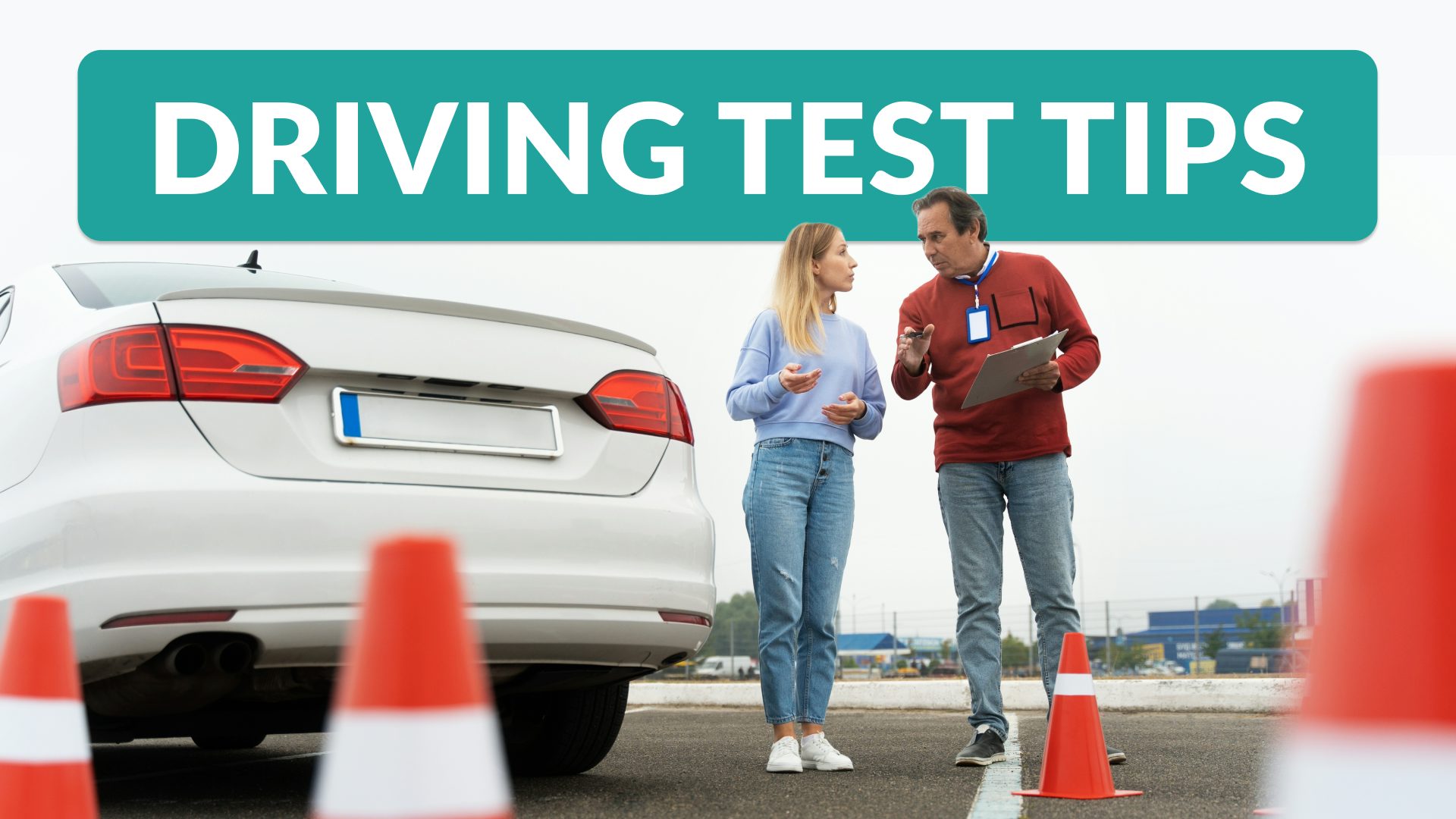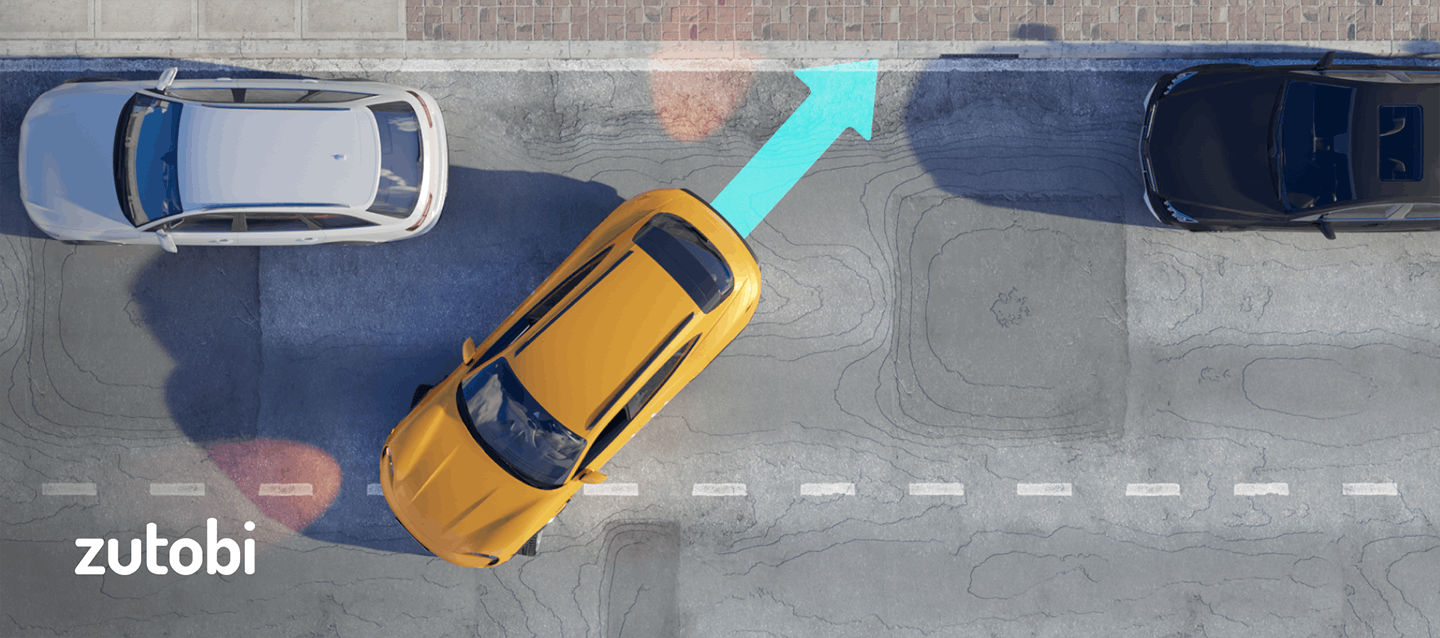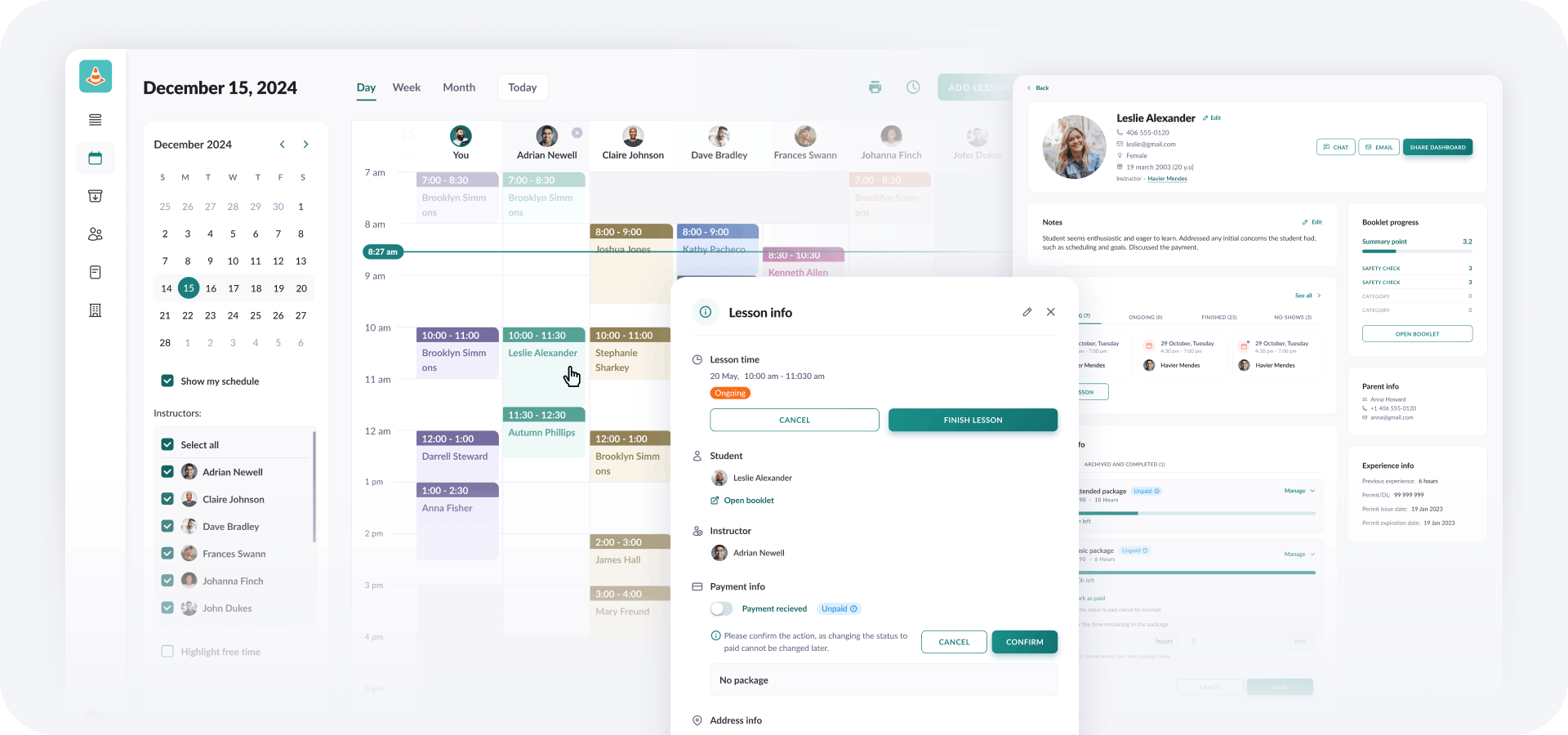
How to Pass Your Driving Test in 2025: 15 Driving Test Tips
In this article, we’ll go through some practical tips that can drastically boost your chances of passing your driving test on the first try.
While there are no secret shortcuts, success really comes down to being well-prepared and practicing the right maneuvers. Follow these road test tips and build your confidence to ensure you’re ready when test day arrives.
15 Tips to Pass Your Driving Test
Tip #1. Remember your pre-drive checklist
As soon as you enter your vehicle, there are a few tasks that your instructor will expect you to perform. While this list can vary by state, here are some of the most common tasks you’ll be expected to complete:
- Operating your seatbelt safely
- Adjusting your side and rear-view mirrors
- Controlling your air conditioning and heating systems
- Turning on your headlights, taillights, and high beams
- Making sure your dashboard gauges and warning lights are working
- Showing that you know where the gear shift, emergency brake, and other essential controls are located

Tip #2. Always stay within 5mph of the speed limit
Driving too fast for the conditions is one of the most common reasons students end up failing their road exams. When you’re nervous, it’s easy to lose track of your speed and accidentally accelerate too much.
To avoid this pitfall, maintain a smooth, steady pace throughout your test and check your speedometer regularly. A good way to build this habit is to try to stay within 5 miles per hour of the posted speed limit every time you practice driving, unless road conditions call for a significantly slower speed.

Tip #3. Clearly show your observational skills
Many students often make the mistake of keeping their eyes laser-focused on what’s going on ahead of them during the exam. While this may sound like the right thing to do, it is very dangerous and can result in an automatic fail on your driver’s test.
Your side-view and rear-view mirrors provide crucial information about the traffic around you. Examiners pay close attention to how you use your mirrors to continuously scan your surroundings. Remember to check your blind spot as well to catch any vehicles that might be adjacent to you. This habit gives you a complete 360-degree view of the road, ensuring you’re not caught off guard.
A great drill to build the habit of checking your mirrors is to say out loud what you see in your mirrors every few minutes as you drive. It may feel a little silly at first, but this will keep you aware of your surroundings and help you build the habit of scanning for potential hazards.
Tip #4. Practice driving as often as you can
There is no substitute for simply getting behind the wheel and practicing your main driving maneuvers. Whenever possible, you should ask a parent or close relative to accompany you on a supervised drive.
This will allow you to gain a certain level of comfort on the road, which will help you a lot on the driver’s test. You want to make sure you expose yourself to different driving situations and conditions. Don’t just stick to your quiet suburban neighborhood on sunny days. We can’t predict the weather or traffic conditions on test day, so make sure you’ve experienced a little bit of everything.
Also, try to choose an experienced supervisor who constantly gives you tips when practicing, as it can be difficult to see your own mistakes.
Tip #5. Always check your blind spots
We all know that checking your blind spot is crucial, but under the pressure of the driving test, many students forget to do it. They might signal too late or skip double-checking their blind spot entirely. Every time you change lanes, merge, or pull out, you must turn your head to check your blind spot.
A simple memory trick to get into this habit is to mentally chant “Signal, Mirror, Shoulder” right before you move.
Tip #6. Slow down before turning
Accelerating into a turn is a bad practice that could result in a dangerous accident. It is important to take your turns very slow, especially as a beginner. When turning, be sure to slow down and complete the maneuver before reapplying force to your accelerator. Observe your surroundings to avoid striking pedestrians or debris that may be in your path.
Tip #7. Be cautious when approaching traffic lights
Traffic lights are one of the more obvious driving rules for people of all ages to understand. We’re taught at a very young age that a green light means ‘go’ and a red light means ‘stop’. However, there has been some discrepancy in what you should do at a yellow light.
In the majority of instances, you should prepare to stop when approaching a yellow light. This way, you’re not caught running a red light, which is an automatic fail.

Also, make sure to look both ways before beginning to accelerate after a green light. Some drivers speed through intersections when the light has just turned red, which can result in an accident. This is not just a great road test tip, but something you should always do to stay safe on the roads.
Tip #8. Learn to reverse without backup cameras
Although many modern vehicles are equipped with backup camera technology, their use is prohibited on the DMV road exam. Your administrator will either have you turn the system off or require you to cover its screen with a clipboard.
This means you must learn to perform all maneuvers using your own observation skills. Always check your surroundings before putting the car in reverse and while steering to your destination. Failing to clearly check your blind spots may result in point deductions on your test. Make sure you practice these maneuvers without relying on your camera, so you’re fully prepared for the exam.
Tip #9. Brake gently
Aggressive braking is another common reason for missed points on the road test. It can be tempting to immediately hit the pedal with force, but you should practice slowly applying pressure about a quarter-mile before your destination. Your vehicle will have ample time to come to a stop.
Another great way to avoid aggressive braking is to look well ahead of your vehicle – that way you will be able to spot potential hazards and react in time. If you know your defensive driving techniques, this shouldn’t be an issue.
Tip #10. Inspect your vehicle beforehand
The DMV requires your test vehicle to be road legal in order for it to be used on the road exam. Your test instructor will check for the following items prior to administering the test.
- Valid registration in your state
- Current insurance and inspection
- Functional speedometer, horn, and windshield wipers
- Functional interior safety equipment (seatbelts, airbags, rear view mirror)
- Functional doors and exterior mirrors
- Working head and tail lights, as well as brake lights and emergency lights
- No check engine or other service lights present on dashboard
Doing an inspection of your car up to a week before your exam will prevent you from running into surprise headaches on test day.
You can read our full checklist here.
Tip #11. Know your basic maneuvers
Having a solid grasp of your basic maneuvers will be necessary to pass the driver’s test. Make sure you are comfortable demonstrating the following maneuvers:
- Three-Point Turns
- Lane Changes
- Complete Stops
- Parallel Parking
- Merging onto Highways
- Backing Up in a Straight Line
- U-turns
Tip #12. Learn to parallel park
Parallel parking has always been a difficult maneuver for students to understand. While it can be frustrating to master, it is a vital skill for those living in densely populated urban areas. Many argue; however, it is not as pertinent for suburban and rural drivers. In fact, there are a few states that have eliminated parallel parking from their road test altogether.
If you live in one of the states that test parallel parking on the driving test, it is definitely something you need to practice. Parallel parking is considered to be one of the most difficult maneuvers for learners.
Parallel parking is a handy driving maneuver to comprehend, regardless of your geographic location. Even if it won’t be tested on your road exam, you will certainly face a parallel parking situation at some point in your future driving endeavors.

Tip #13. Don’t assume that your mistakes are critical
You may notice that you make a mistake and assume you have failed the test. Don’t. Your mistake may be a non-critical mistake, which means you may still have a chance of passing.
- Critical mistakes are errors that show a lack of control of the vehicle or errors that are dangerous to others on the roadway. They result in an instant fail on the driving test.
- Non-critical mistakes are all other errors or mistakes you make during the exam. Depending on where you live, you may accumulate a few non-critical mistakes without failing the test.
At the end of the road test, the driving instructor will review your score and point out areas of improvement. You’ll be told about your critical or non-critical mistakes.
Tip #14. Pay attention to the road, not the examiner
As you’ll no doubt have learned early on, any distraction will severely impact your safe driving skill and concentration. While you may feel anxious to know what the examiner is doing and writing down, it’s completely irrelevant to know during the test.
Instead of focusing on the examiner, focus on the road and the area around your car to ensure you drive in the safest and best way possible. This, if anything, will ensure the examiner only writes positive things about your driving and help you get a passing grade.
Tip #15. Make sure you understand the handbook
Understanding what you’ll be tested on is crucial to passing the driver’s test. Make sure you understand the topics discussed in the driver’s handbook and take additional DMV practice tests to remember better. This will help build the foundational knowledge you need for behind-the-wheel training. Remember, the permit test isn’t just a hurdle to clear – it’s the base upon which you’ll build all your driving skills.
For example, imagine approaching a four-way stop on your driving test. If you’re not sure who goes first, you’ll hesitate, get stressed, and risk making a critical error. That’s why it’s so important to have a proper foundation, which only comes from consistent, thoughtful study.
Tip #16. Don’t take the test too early
It’s understandable to want to pass the behind-the-wheel test and never think of it again, but taking the test before you are ready will inevitably lead to a failing grade. In fact, one of the most common mistakes, according to instructors we’ve spoken to, is taking the test too early.
You won’t be able to “fake” your way to a driver’s license, so take your time to learn how to drive properly before taking the test. You’ll end up saving time and money in the long run.
Bonus Tip
Want to know exactly what examiners are looking for? Our behind-the-wheel online course is designed to give you the essential skills and confidence you need to pass your test. With professional driving lessons, you’ll focus on the key areas that examiners assess. You’ll also get insider tips from experienced instructors on what to expect and how to avoid common mistakes.
That’s It
All in all, the DMV driving exam can be quite simple, as long as you’re willing to sufficiently study and prepare well beforehand. Be sure to practice, practice, practice your skills behind the wheel.
We hope that these tips have helped you, and that you feel more confident for your upcoming driver’s test. Otherwise, we can help you out. Good luck!

Avoid beginner mistakes with expert advice
Build road test confidence and reduce anxiety
Make at-home lessons a success with our parent guide
Recommended articles
Ace your DMV test, guaranteed
Want to Be the Top School in Your Area?
- Simple & automated admin
- More time for teaching
- #1 learning materials for students


